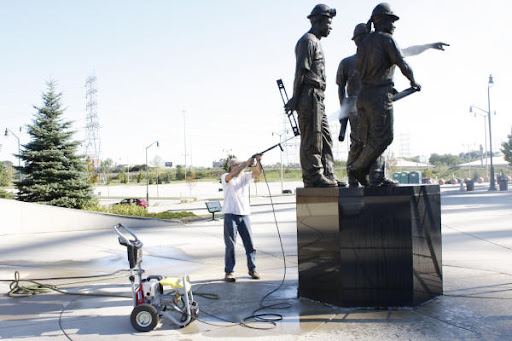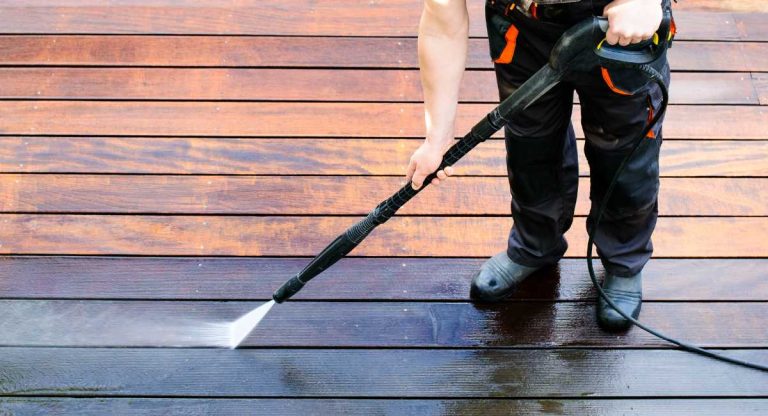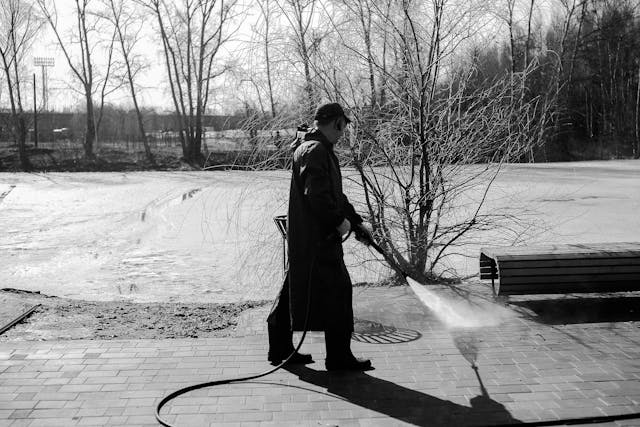
Outdoor sculptures and public art pieces add beauty, character, and cultural value to communities, campuses, and commercial spaces. But over time, they face a harsh reality — dirt, grime, bird droppings, algae, pollution, and vandalism can all take a toll on the appearance and integrity of these installations. 🧼🗿
That’s where specialized power washing services come in. But cleaning art isn’t the same as cleaning sidewalks or siding. It requires precision, sensitivity, and expertise.
If you’re responsible for maintaining public or private outdoor artwork, here’s how to hire the right power washing service — one that knows how to clean with care.
🧽 Why Outdoor Art Needs Gentle but Effective Cleaning
Outdoor artwork is exposed to everything from sun and rain to urban grime and vandalism. Even in rural settings, sculptures accumulate:
- Dust and dirt
- Algae, moss, and mildew 🌿
- Bird droppings 🐦
- Hard water stains
- Tree sap
- Graffiti or paint overspray
- Airborne pollutants and oxidation
Regular cleaning preserves the art’s appearance, slows deterioration, and shows respect for the artist’s vision.
However, the wrong cleaning method can do irreversible damage — fading paint, stripping finishes, or scratching delicate surfaces.
🖼️ Common Materials Found in Outdoor Sculptures
Before hiring a power washing service, you must identify what materials you’re dealing with. Each has its own care needs:
| Material | Cleaning Sensitivity |
|---|---|
| Bronze | High – may patina or oxidize |
| Stainless Steel | Medium – prone to water spotting |
| Marble or Stone | High – porous, prone to etching |
| Painted Metal | High – soft wash only |
| Wood | Very high – easily damaged |
| Glass | Medium – avoid streaks, scratches |
| Concrete or Resin | Medium – depends on finish |
A professional power washing service should ask what the sculpture is made of before giving a quote.
Browse Amazon Here For Top Rated Power Washers And Accessories
💬 Questions to Ask Before Hiring
Cleaning art is part science, part craftsmanship. Don’t hire just anyone. Ask:
- “Have you cleaned outdoor sculptures or art pieces before?”
- “Do you offer soft washing or hand-cleaning methods?”
- “What steps do you take to avoid damaging finishes or patinas?”
- “Can you work with conservators or property managers?”
- “Do you provide before/after photos or condition reports?”
- “Are your cleaning agents pH-balanced and non-abrasive?”
- “Do you have insurance that covers work on valuable art pieces?” 🖼️
If they seem unfamiliar with these concerns, they’re not the right fit.
🛠️ Cleaning Techniques to Look For
Art pieces are rarely power washed in the traditional sense. The right service will offer:
🧴 Soft Washing
Low-pressure spray (under 500 PSI) with eco-safe cleaners designed for delicate surfaces.
🖐️ Hand Detailing
For sculptures with intricate details, textures, or vulnerable finishes — hand scrubbing is often used alongside soft wash systems.
💨 Steam or Hot Water Cleaning
Effective for removing sticky residue, tree sap, or biological growth without chemicals.
🚫 Graffiti Removal
Specialized, non-damaging solvents designed to lift paint without harming underlying surfaces.
⚠️ What NOT to Do
A good power washing crew knows what to avoid just as much as what to do. Red flags include:
- High-pressure nozzles on delicate sculptures 🚫
- Use of bleach or harsh industrial chemicals
- Spraying directly into cracks, seams, or vented areas
- Walking on base platforms or climbing on the art
- Using generic surface cleaners not meant for artistic materials
One careless move can destroy decades of craftsmanship.
🌳 Location Matters: Site-Specific Considerations
Public and private art is often installed in challenging locations:
- In parks or gardens with delicate landscaping 🌼
- Near fountains or ponds (watch runoff) 💧
- Mounted high on buildings or walls
- Surrounded by pedestrian traffic
- In areas with limited water access
Ask if the company can accommodate these challenges. Some may use portable water tanks, solar-powered equipment, or rope access crews for hard-to-reach installations.
💵 What It Might Cost
Art cleaning isn’t priced like sidewalk washing. Expect higher rates based on:
- Artwork size and material
- Complexity of the sculpture’s shape
- Fragility of the finish
- Need for scaffolding, lifts, or permits
- Conservation-level cleaning standards
| Artwork Type | Estimated Cost |
|---|---|
| Small sculpture (3–5 ft) | $200 – $600 |
| Medium (6–10 ft) | $600 – $1,200 |
| Large monument or installation | $1,500 – $5,000+ |
| Graffiti removal (per occurrence) | $300 – $800 |
| Annual maintenance plan | Custom quoted |
Some municipalities or private collectors may also factor in conservator consultations.
📝 Documentation and Reporting
Professional art-cleaning services should provide:
- Before and after images
- Surface inspection notes (cracks, corrosion, graffiti)
- Detergent and method log
- Recommendations for future care
- Invoice broken down by sculpture or area
This is especially important for city governments, museums, or art trusts who need records for budgeting and restoration.
🤝 Collaborating with Artists or Conservators
In some cases, especially with high-value or commissioned pieces, it’s wise to involve the original artist or a conservator in the cleaning process.
Power washing crews should:
- Defer to the artist’s guidance if available
- Use only approved methods for legacy or protected pieces
- Coordinate timing and technique with ongoing preservation efforts
- Be willing to work under supervision when required
Respecting the artwork also means respecting the people behind it. 🎭
🌟 Final Thoughts
Outdoor art deserves more than just admiration — it deserves preservation. Whether it’s a towering metal sculpture in a civic plaza or a hand-carved bench in a botanical garden, every piece tells a story.
By hiring a specialized power washing service that treats art with precision, care, and cultural respect, you’re not just cleaning a surface — you’re protecting a legacy.
So go ahead. Let the art shine. 🧽✨
Browse Amazon Here For Top Rated Power Washers And Accessories






